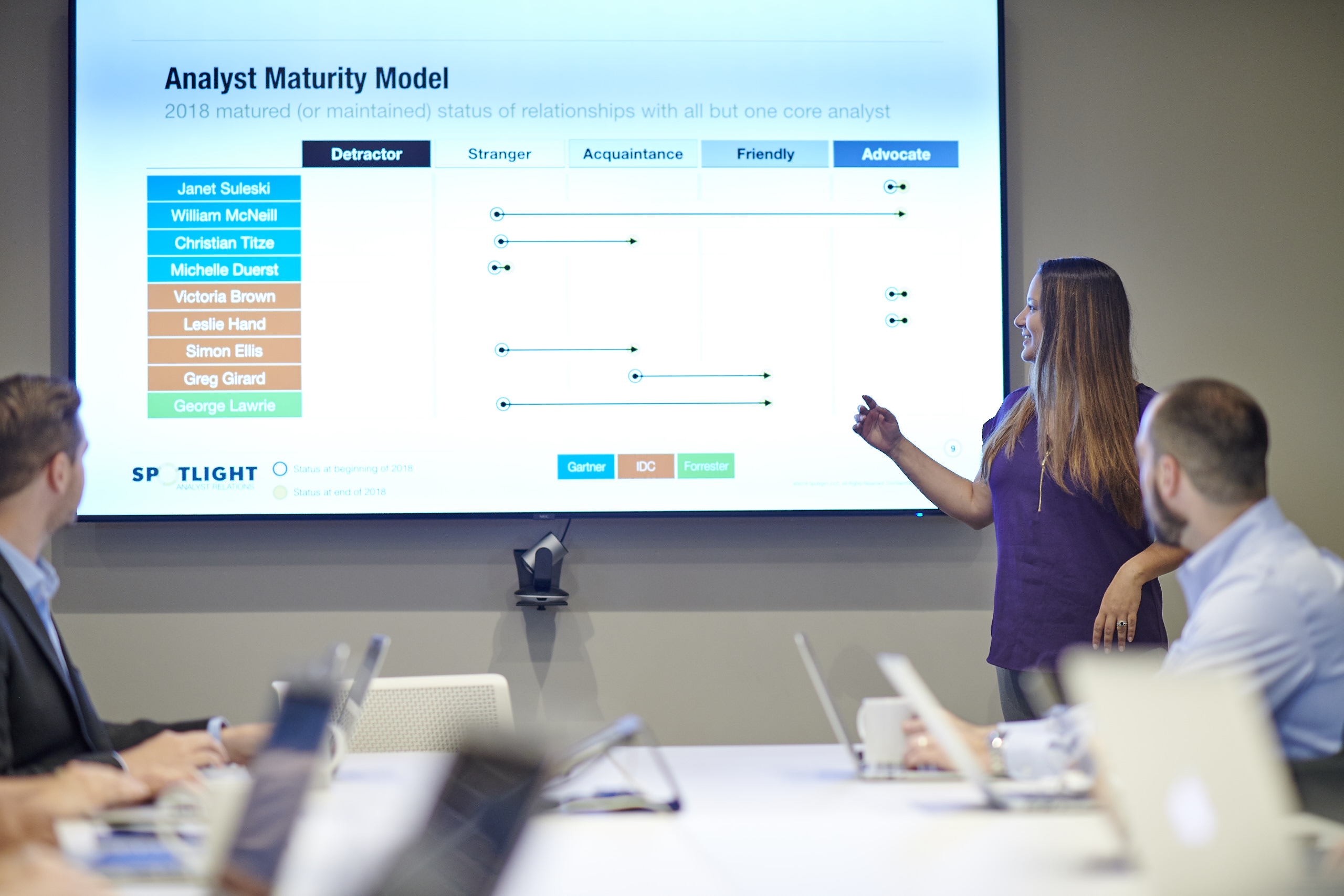by Marlena Johnson
April 15, 2021

At Spotlight, one of the many challenges we help AR professionals solve is prioritizing their organization’s key industry analysts. With hundreds of analysts, markets, firms, and evaluative research, it can be difficult to ensure you’re spending your time with the right people. But, how do you know the best core analysts for your business? Spotlight is here to help you identify the right analysts to lead a more insights-driven AR program.
In the analyst relations world, we know how many analysts are out there writing impactful market research and providing counsel to buyers on which technologies and agencies to use to solve their challenges. Analysts are covering a myriad of markets and writing to a vast multitude of leaders. The key to finding the right analysts is by first narrowing the field. Use the below three identifiers to simplify your initial list:
Once you’ve narrowed down the list of relevant analysts to your program, you’ll most likely have a large amount of analysts remaining. Spotlight recommends breaking this list down further using a tiered approach. To create a tiered roster, review the below five examples of different objectives and how they can help you make an informed decision on how to best engage with your program’s most relevant analysts.
Now that you’ve narrowed your initial list and tiered the analysts based on your AR program’s key objectives, it’s time to make a plan. Thinking through the cadence of engagements, identifying a strategy for your program, and aligning key speakers for different engagement types are all examples of relevant details to include when crafting your plan.
Tiering the analysts relevant to your program will ultimately lead to a more efficient and effective approach to analyst relations. You’ll be able to track reporting metrics, capture valuable analyst feedback, and lead a more insights-driven program. Interested to learn more about an insights-driven AR approach? Head to our website to check out our additional resources.